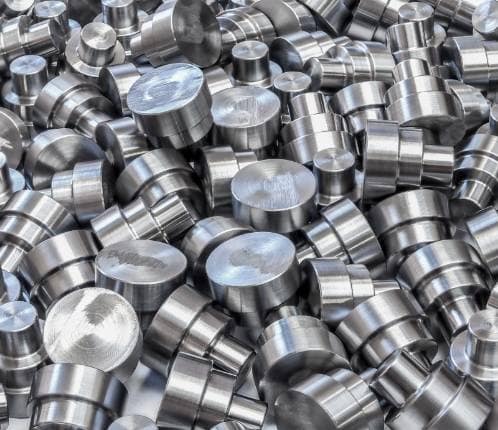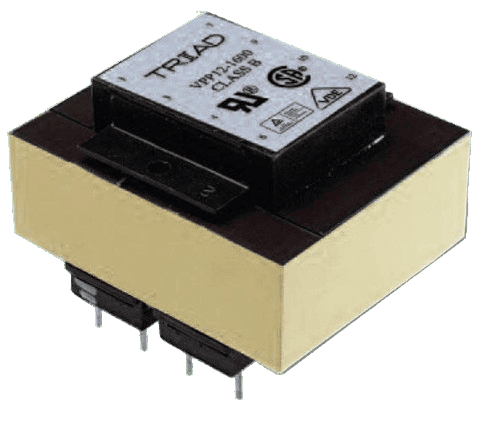Transformer Core Material Considerations
A transformer core’s material, size, and shape all play an important role in its performance capabilities. Below, we’ll discuss each of these factors in detail, offering an in-depth look at transformer design and which type of transformer core is most efficient for various use cases.
A transformer core is a magnetic device that converts input power into output power—it’s the heart of the transformer. Since the core determines the transformer’s output voltage, core material is an essential consideration that impacts performance. Ideal core materials have high magnetic permeability, and they can be designed in many sizes and shapes.
Types of Transformer Core Materials
Transformers are driven by the flux that occurs between their primary and secondary windings. When an input voltage is applied, it passes through the primary winding, producing an electromagnetic field around it. That electromagnetic field induces a voltage in the secondary winding. Magnetic cores determine how much voltage is induced in the secondary winding and act as the pathway for this flux.
When selecting the right transformer for a given application, one of the first steps is to identify the most suitable transformer core material. Ferrous, ferrite, powdered, and amorphous materials are the most common types. Below, you can learn more about the options within each of these categories.
-
1. Ferrite
1 Ferrite

-
2. Ferrous
2 Ferrous

-
3. Powdered
3 Powdered

-
4. Amorphous
4 Amorphous

Triad Magnetics is a trusted source for standard and custom magnetics solutions worldwide. To learn more about why you should partner with Triad Magnetics
Contact Us TodayShape
A core’s shape has a significant impact on its efficiency, inductance, capacitance, and overall cost. Certain applications require a specific core geometry to achieve the necessary performance level. A few key considerations in transformer core shape include:
- Window Configuration: Windows are extremely important in transformer core design and should be as wide as possible to maximize winding breadth while minimizing the number of layers. Wide windows minimize Rac and leakage inductance and lessen the impact of the fixed creepage allowance dimension. Wider windows also result in less required winding height and better utilization of the window area.
- Gap Presence: Transformer core shapes can feature a gap or an area within the core that is filled with air. Gaps allow more energy to be generated and stored because they prevent the core material from becoming magnetically saturated. In addition, gaps allow electrical current to flow through ferromagnetic cores in a more controlled and metered manner. To avoid unwanted drops in energy density, the air gaps are designed to be as narrow as possible.
In addition to windows and gaps, transformer core types come in many shapes and configuration options, including the following:
- Laminated Cores: Laminated cores made from stamped steel strips come in a variety of shapes. Popular configurations include EL, EE, EI, UU, UI, and F. To minimize waste, scrapless dies can be designed for this process.
- Pot Cores and PQ Cores: These designs feature a small, square-shaped window area. Pot cores are not well-suited for high-frequency switch-mode power supply (SMPS) applications, and their creepage allowance wastes a large fraction of the window area. However, their advantage is that they offer better magnetic shielding than designs that use EE cores.
- EC, ETD, and LP Cores: These designs are all EE core shapes and feature large window areas relative to the core size. These windows have the desired wide configuration.
- Toroidal Cores: Properly wound toroidal cores have all windings uniformly distributed around the entire core. The winding breadth is essentially the core’s circumference. Toroidal cores have the lowest possible leakage inductance and minimize the number of winding layers. However, toroidal cores can be challenging to wind, particularly with the gauge and shape of conductors in SMPS transformers. At Triad Magnetics, we have decades of experience manufacturing high-quality, repeatable toroidal cores for even the most challenging applications.
Size
Transformer cores come in many sizes, with multiple variables involved in selecting the correct one. Note that a core’s power handling capability does not scale linearly with its volume or area. For example, a larger transformer must operate at a lower power density since its heat-dissipating surface area increases less than its heat-producing volume.
A transformer’s core size is measured in inches. The wider a core is, the lower the transformer’s loss of resistance will be. However, eventually, the core can become too wide to be practical. Unless you are building a very high-power device, smaller cores deliver higher efficiency in most applications.
Learn More About Triad’s Transformer Solutions
Identifying the best core material, type, size, and shape for your transformer is essential to meeting your application’s electrical requirements. Additional design considerations include:
-
At Triad Magnetics, our design engineers specialize in creating solutions for demanding, industry-diverse electrical applications. From our ISO 9001:2015 certified facility, we offer off-the-shelf and custom-designed products, including audio transformers, wall plug-in transformers, power transformers, current sense transformers, and more.







